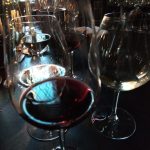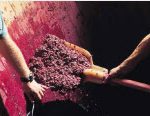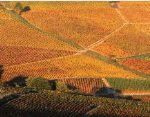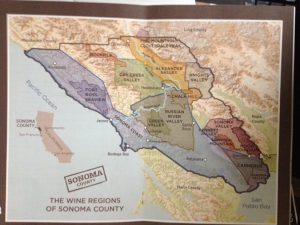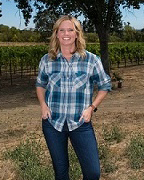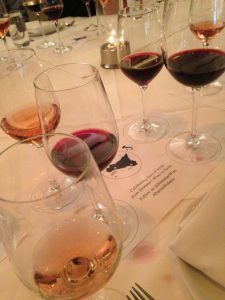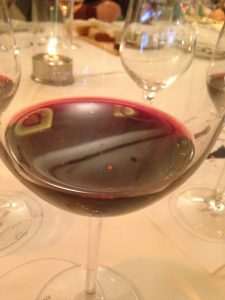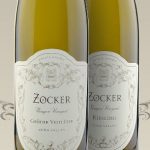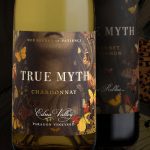South Africa – not a place we U.S. folks normally think of in connection with fine wines but, hey, the times they are a-changin’. And some excellent South African wine makers are making their presence known here in the U.S. with their wines that take full advantage of the many fine terroirs available there. Their 2019 visit to Chicago – Wines of South Africa Roadshow held at Bar Ramone – paired delicious appetizers with a range of varietals from five different wineries in various sections of South Africa. Some of the 4- and 5-star lovelies – with quite reasonable prices – included:
- Haute Cabriere Chardonnay/Pinot Noir 2018, Robinson & Sinclair. SRP ~$15.
- Brut NV Rosé – 50/50 Chardonnay-Pinot Noir, Graham Beck. This one gets 4-6 hours of skin contact SRP ~$20.
- Oak Lane Merlot/Cabernet Sauvignon 2017, Beau Joubert. Imported by Wein-Bauer. SRP ~$9.
- Boschendal Brut Rosé NV, DGB. Imported by Pacific Highway. SRP ~$21. This one was a BIG favorite at the tasting.
- Bellingham Old Vine Chenin Blanc 2016, DGB. Made from grapes grown in 45-year-old vineyards.
- Bellingham Bernard-series SMV 2014, DGB. Great with heavy meats.
- Boschendal Cabernet, DGB. A lovely, gentle red. SRP ~$20.
- Glenelly Estate Reserve 2012. SRP ~$25.
- Glenelly Lady May 2012. 89% Cabernet, 10% Petit Verdot, 1% Cabernet Franc. Delicious! SRP ~$50.
Another day brought six South African winemakers to City Winery Chicago, 1200 W. Randolph, where they conducted a seminar to educate participants about how in the past ten to fifteen years South African winemakers have caught up with the wisdom of winemakers from many other countries.
Representing some of South Africa’s top winemaking talent, this collaboration brings together longtime friends and colleagues who have studied and worked together over the last 20 years. “This is the first time we’re telling our story in the United States and we’re incredibly excited to tell this story together,” says Adi Badenhorst of A.A. Badenhorst Family Wines.
In showcasing the diverse wines and landscape of South Africa, each winemaker represents a distinct terroir and perspective on the experimentation and innovation happening in the country today. The group includes:
- Adi Badenhorst, A.A. Badenhorst Family Wines
- Sebastian Beaumont, Beaumont Family Wines
- Abrie Beeslaar, Beeslaar and Kanonkop Estate
- Graham Weerts, Capensis
- Eben Sadie, The Sadie Family Wines
These experienced winemakers have begun making new magic with some popular grape varietals like making Chenin Blanc. They’ve begun rarefying grape varietals to create the likes of Pinotage – a combination of Cinsault and Pinot Noir – that can be used to make a rich, delicious wine. And they’re putting together classic varietals like Cabernet Sauvignon, Merlot and Cabernet Franc to produce especially deep, @arich wines. All of these wines are totally food friendly.
“South Africa is exciting in that it’s not monolithic, it’s incredibly diverse,” says Eben Sadie of The Sadie Family Wines. “It’s the oldest of New World wine regions, and at the same time there’s a novel approach to wine with many individual interpretations.”
The panel of winemakers collaborated over many hours of testing to select a small group of wines they felt were emblematic of the diversity in South African wines. And Rebekah Mahru, Beverage Director for City Winery moderated the master class so that each of these big-personality winemakers had the opportunity to speak from the heart about their wines. Here is a list of those specially chosen wines along with some of the panelists’ comments:
- A.A. Badenhorst Ramnasgras 2017. 100% Cinsault. SRP ~$45. Adi said, “After 1995 most South African winemakers felt they had to make wines that were like those made in the U.S. Now, in the last ten to fifteen years, we are starting to make really South African wines.”
- The Sadie Family Wines Soldaat 2017. 100% Grenache Noir. SRP ~$75. This wine tasted a bit grape-y to us. Eben Sadie said, “We have corrected many of the mistakes about where to grow grapes, etc. We’re a more focused, vibrant industry.” The Jackson Family is now investing in South African wines. “They have always been pioneers,” he said. Eben said he learned a great deal from having spent ten years living in Spain.
- Storm Vrede 2016. 100% Pinot Noir. Pleasant, light, not too acidic, pale color. SRP ~$55.
- Beeslaar Pinotage 2016. A 4.5-star 100% Pinotage (a hybrid of Pinot and Cinsault). SRP ~$55. This is Abrie Beeslaar’s own label, founded in 2011. Grown on shale, this wine has rich perfume and many floral notes. Pairs better than most wines with spicy foods.
- Kanonkop Estate Paul Sauer 2015. A 5-star Bordeaux blend created by Abrie Beeslaar – 70% Cabernet, 15% Merlot and others. In South Africa they are allowed to plant anything anywhere they like. No rules, as in France. Beeslaar said the wind is a key factor in the quality of the grapes in this lower-mountain-slope vineyard. The winds cool the vineyards and limit the growth of the bush vine plants.
- Boekenhoutskloof Syrah 2015. 100% Syrah. Another wine from Eben Sadie, this one has a short finish bit is otherwise fully ripe and rich. SRP ~$65.
- Beaumont Family Wines Hope Marguerite 2018. 100% Chenin Blanc. Named after Beaumont’s grandmother, this wine is green-ish, light, elegant, grown on shale soils.
- Capensis Chardonnay 2015. 100% Chardonnay. Made by Beeslaar.
- The Sadie Family Wines Palladius 2016. This 5-star white is a blend of 11 dfifferent varieties from the Swartland area. Aged 24 months in clay amphorae, then in concrete eggs, then in oak foudres which don’t impart oak characteristics.
- Vergelegen Flagship G.V.B. White 2016. 80% Semillon and 20% Sauvignon Blanc. These vineyards are also scoured by howling winds on a regular basis. This wine is green, light, fresh and young, and is not yet available in the U.S.
- Klein Constantia Vin de Constance 2015. 100% Muscat de Frontignan. Lovely dessert wine that is more complex than many sweet wines. Jane Austen and others of her time were huge fans of Constantia wines. SRP ~$95.

